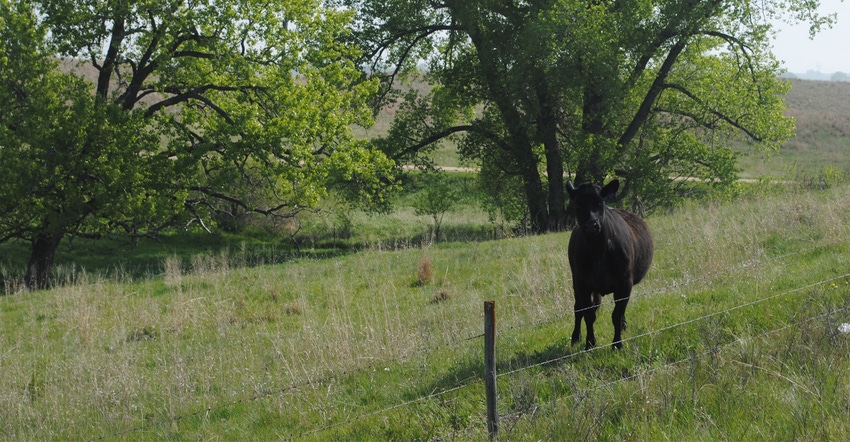
Silvopasture is a land management system that includes the deliberate integration of trees, grazing livestock and forages in a single, shaded area. These types of systems are intensively managed for forest products, as well as forages for livestock, to provide short- and long-term income from the same land base.
In 2019, Michigan State University began a silvopasture research project in the central Lower Peninsula and Upper Peninsula. The trials consisted of intentional seeding of red clover, tall fescue, white clover and orchardgrass, which were selected for their shade tolerance and ability to withstand traffic from the grazing livestock.
The forages were seeded alone and in mixture of clovers and grass, totaling eight treatments, replicated three times in a randomized block design on four different sites.
“The sites we used last year were not all optimal, because we wanted to see how establishment would go under different conditions,” says Monica Jean, MSU Extension field crops educator. “We believe that characteristics like pH, moisture, fertility and light interception played a huge role, much like the success of an establishment for a forage crop not under a canopy” of trees.
Each research location was graded for its site quality, access, erosion, hazards, terrain, location and existing timber resources and vegetation. The scores are a way that landowners could assess the potential of the sites for silvopasture development.
Taking the criteria into account, the highest scoring site, with a score of 95 — meaning it has good potential for silvopasture — was located in the Upper Peninsula on land that had been partially harvested of timber. Remaining trees included primarily hardwoods such as sugar maple, as well as northern white cedar.
Soil tests showed above optimum phosphorous, potassium and magnesium, with a soil pH of 7.5. Soils were Ontonagon limestone rock land and Summerville fine sandy loam. The site was planted June 13 with no site preparation. Forage samples of primarily orchardgrass with some clover were taken Sept. 24 before grazing. The samples averaged 10.6% crude protein and a relative feed value (RFV) of 89.13.
A second site located in the central Lower Peninsula received a score of 88, which also is high for potential. On this site, the farmers had harvested timber to create a silvopasture system. The area was quite rough, with logging slash piles still in place across most of the land. The research areas had been grazed before seeding on July 10. The wet spring last year, as with most of the research sites, caused delayed seeding for most of the landowners.
The soil survey on this tract was mostly Belleville loamy sand and Lenawee silty clay, with a 0% to 1% slope. Soil tests showed above optimum levels for phosphorus and magnesium, and below optimum for potassium, with a pH of 6.1.
After seeding, the area was grazed in mid-August. Forage tests were much better, with average crude protein of 18.98% and RFV value of 129.84.
Another site in the central Lower Peninsula with a soil pH of 5.6 was graded at 82 and was seeded June 25. This land had slopes ranging from 6% to 18%, with soil survey consisting of Graycalm sand and Montcalm loamy sand.
No site preparation was possible, and mostly the red and white clovers established in the existing grass areas, with limited seeded grass establishment. Crude protein on this site averaged 12.5%, with RFV of 133.
A final site in the Upper Peninsula scored a 71, which meant that it has potential for silvopasture, but careful consideration was needed to see if the benefits outweighed the costs. The existing timber on this site was white pine and cedar. The soils had a pH of 5.5, with optimum levels of phosphorus, potassium and magnesium.
On June 11, leaf litter was removed, and forage seed was broadcast and rolled to improve seed-to-soil contact. In spite of these extra efforts, because of weather, pH and the density of the tree canopy, no forage establishment occurred.
Jean says the study will continue this season with further collection of the same types of data. “Since last season was an establishment year for the forages, we did not take any yield data,” she explains. Total dry matter yield data will be compiled in the future.
While this study directly relates to timber areas in Michigan, landowners across the country can take some information away from this research on assessment of timber sites for silvopasture systems, and some of the factors that contribute to forage success and failure within the systems. Learn more online at canr.msu.edu.
About the Author(s)
You May Also Like






